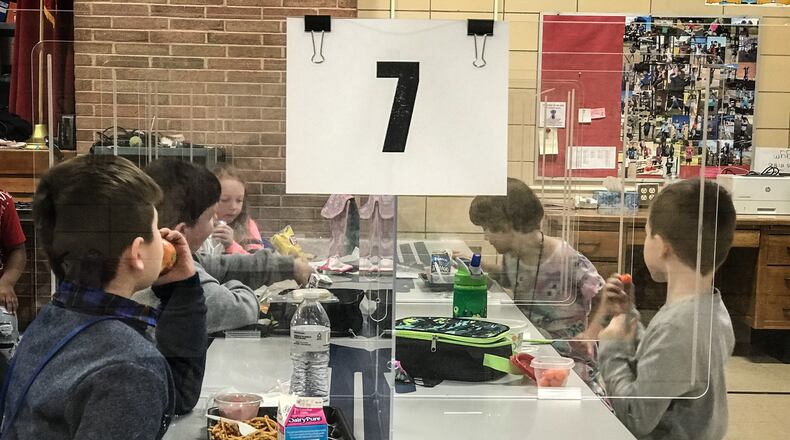Agriculture Secretary Tom Vilsack called it a “game-changing intervention to reduce child hunger.”
“By providing low-income families with a simple benefit over the summer months, USDA is using an evidenced-based solution to drive down hunger and ensure no child has to miss a meal,” Vilsack said.
For years, tens of thousands of Dayton-area students from lower-income families have received free or reduced-price lunch during the school year. While Dayton, Trotwood and other communities have enough poverty that all students receive free school lunch, Troy had schools with over 50% eligibility, Kettering had a school at 47% and Northmont at 44%.
In past summers, some of those students had access to Summer Food Service Program sites, often operated by schools, churches and other non-profits. But the USDA estimates that those programs typically reach less than 20% of the children served during the school year.
In the Pandemic EBT program, a benefit of $6.82 per eligible child, per weekday will be loaded onto their existing EBT card. Children are eligible if they are income-eligible to receive free or reduced-price meals during the school year or if they are under age 6 and live in a SNAP (food stamp) household.
The benefits can be used to buy most food products, according to the Ohio Department of Job and Family Services, with the exception of alcoholic beverages, vitamins/medicines, and hot food made to be eaten immediately (restaurants, etc.).
ODJFS spokesman Bret Crowe said they have received guidance from the federal Food and Nutrition Service on the program, and they’re waiting for the formality of final approval.
“We estimate that it will be a few weeks before we receive the OK,” Crow said.
The $6.82 per weekday would come out to roughly $375 in food aid per child over the summer months.
USDA officials said previous EBT summer pilot projects were successful at reducing severe food insecurity and improving the quality of children’s diets. USDA cited research by the Brookings Institute, saying that Pandemic-EBT benefits had decreased food hardship faced by low-income children by 30% in the week after they received the benefit.
Local schools have been offering meal pickup this school year for students who continued to live at home. But Kettering school officials said earlier this year that even those efforts have challenges, as some families don’t have transportation to pick up meals and some aren’t able to reheat at home.
When the USDA first introduced pandemic-EBT benefits for students, Dayton and Xenia schools said it was crucial that families update their school mailing addresses, as the state will mail the cards to the address on file with the school.
“Nutrition during childhood sets the foundation for healthy growth and development,” said Lee Savio Beers, president of the American Academy of Pediatrics. “Throughout the pandemic, families have faced countless challenges. Worrying about where their child’s next meal will come from should not be one of them.”
About the Author

